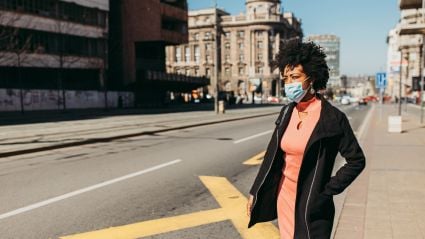
The COVID-19 pandemic is amplifying the entanglement of systemic racism and health in our country. As the number of US cases continues to rise, pockets of data are revealing that African American communities are being disproportionately impacted by this crisis. From Chicago to Milwaukee and Detroit, Black Americans are showing much higher rates of hospitalization and death. The destructive impacts of this virus tangibly expose our nation’s inequities in a way that is palpable and intolerable.
Unfortunately, this should not be a surprise. African American communities suffer from higher rates of chronic disease that increase vulnerability to coronavirus complications, including diabetes, asthma, hypertension, and heart disease. People of color are also experiencing deeper financial impacts precipitated by the pandemic. Black Americans have one of the highest rates of poverty at over 20 percent and are more likely to be paid poverty-level wages, exacerbating impacts from layoffs and furloughs. And while these statistics highlight the disparate impact along racial lines, a greater question to ask is, why do these disparities exist to begin with?
During and in the aftermath of this pandemic, there is an opportunity to look at our current policies and systems and identify ways to reverse the impacts of structural and systemic racism. Applying a health equity lens to all approaches, interventions, and policies can begin to close inequity gaps.
The answer is not rooted in biology but is a symptom of systemic racism and generations of oppressive policies that have been explicitly inflicted on communities of color. It is critical to call out racism versus race in these discussions. Race is a social, not biologic construct. Racism, which is prejudice, discrimination, or antagonism directed to an individual because of their race, precipitates chronic stress responses that have physiologic impacts and can lead to many of the chronic diseases that plague Black communities. When embedded into public policy and decision making, systemic and structural racism results and acts as a vector for the multitude of health disparities seen in communities of color. From redlining policies that segregated communities and decimated the financial wealth of Black Americans, to transportation and urban planning decisions that deliberately cut off communities of color from resources such as health care, grocery stores, jobs, and schools, these system-level decisions have codified the place-based inequities we see today. Not having access to these basic yet essential resources and services fans the flame of illness and poor health outcomes.
While structural racism plays a role in creating community-level disparities, deep racial bias in health care has also accelerated inequitable health outcomes for people of color. A sentinel report released by the Institute of Medicine (now the National Academy of Medicine) in 2002 reviewed over 100 clinical studies and found that racial minorities are less likely than whites to receive needed services, including clinically necessary procedures. This was true even when insurance status, income, presence of co-morbid illness, where care was received, age, and gender were taken into consideration. More recent studies have continued to validate these findings, affirming that racism and bias permeate the health-care sector, even with the sworn medical oath to do no harm.
During and in the aftermath of this pandemic, there is an opportunity to look at our current policies and systems and identify ways to reverse the impacts of structural and systemic racism.
Applying a health equity lens to all approaches, interventions, and policies can begin to close inequity gaps.
The Centers for Disease Control and Prevention should continue to make national coronavirus infection data by race and ethnicity publicly available so that health-care leaders, policymakers, and community stakeholders can target interventions and support towards mitigating the disparate impact. In addition, health-care systems and hospitals should prioritize implicit bias interventions to address the often disparate clinical decisions and lack of access to testing for Black patients.
And while ensuring access to acute care and primary care is critical to address the physical health needs, interventions that focus on community-driven solutions that acknowledge the disparity in access to critical resources is also key. There is an opportunity to drive deeper long-term investments into communities of color that have been disinvested for generations, creating access to opportunity that not only fosters economic mobility but also expands access to basic resources, such as grocery stores and affordable transportation, that allow families to both survive and thrive during and after this pandemic.
So as we look to address this dilemma, let’s be sure that we not only solve for the immediate needs but take a moment to ask why to address the root cause. This is an opportunity to have a stoic look at our nation’s entrenched relationship with racism and drive systems change to dismantle its impact.






















